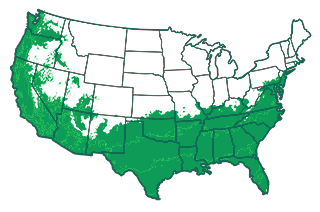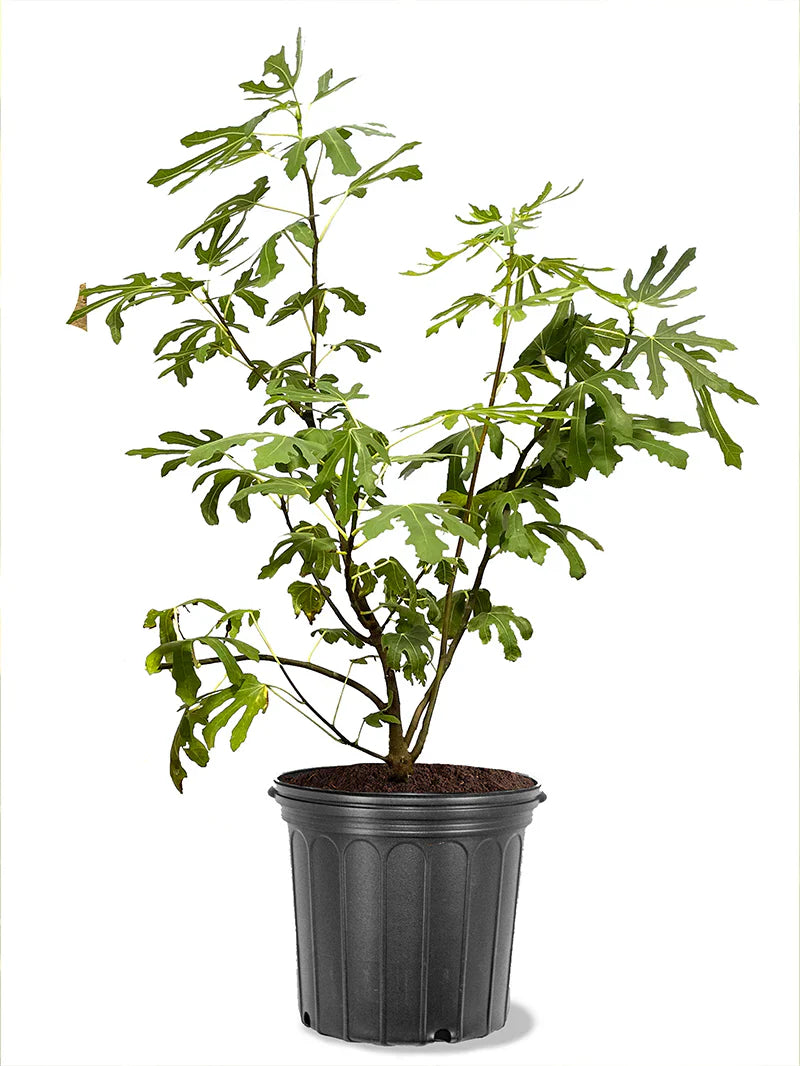About
Texas Everbearing Figs are known for their luscious fruit and resilient growth in a variety of conditions.How tall does a Texas Everbearing Fig tree grow?
Typically, a Texas Everbearing Fig tree reaches a height of 12 to 20 feet when mature. This compact size makes them ideal for small gardens while still providing plenty of fruit. Their manageable height also simplifies maintenance and harvesting.How long does a Texas Everbearing Fig tree live?
Texas Everbearing Fig trees can thrive for many decades when cared for properly, often living up to fifty years or more. Their longevity is enhanced by ideal growing conditions, regular maintenance, and appropriate winter protection. This enduring nature makes them a valuable addition to any landscape.How fast do Texas Everbearing Fig trees grow?
Under optimal conditions, Texas Everbearing Fig trees exhibit moderate growth, adding upwards of a foot to their height each year. Factors like soil quality, watering, and climate can influence this rate. Consistent care and favorable conditions can maximize growth potential, leading to earlier fruit production.How to care for Texas Everbearing Fig trees?
Caring for Texas Everbearing Figs involves regular watering, proper fertilization, and attentive pruning to ensure they produce delicious fruit. Monitoring soil moisture and maintaining a consistent watering schedule can promote deep root development and prevent stress. Fertilize with a balanced mix in early spring to boost growth and fruit development, while annual pruning in late winter helps maintain tree health and optimize fruiting potential.When to prune Texas Everbearing Fig trees?
Prune Texas Everbearing Fig trees in late winter when they are dormant, just before new growth begins. This timing minimizes stress on the tree and encourages healthy new growth. Pruning at this time also allows for better light penetration and air circulation, which enhances fruit production.How to prune Texas Everbearing Fig trees?
Begin pruning by removing any dead, damaged, or diseased wood to maintain the tree's health. Focus on thinning the interior canopy to improve light exposure and reduce disease risk. Aim to keep the tree's shape balanced, ensuring good air circulation to optimize fruit yield and quality.Why do we like Texas Everbearing Fig?
Texas Everbearing Figs offer the dual delight of home-grown sweetness and ornamental beauty, perfectly suited for warm climates. Their rich, flavorful fruit and reliable yields make them an exceptional choice for gardeners seeking both productivity and aesthetic appeal.| Mature Size | 12–20 ft tall × 12–20 ft wide |
| Sunlight | Full (6-8 hours) |
| Spacing | 12–18 ft |
| Harvest Season | May to September |
| Pollination | Self-pollinating |
| Uses | Fresh eating, preserves, baking |
| Water Requirements | Moderate; moist, well-drained soil |

Growing Zone: 7-10
Begin by selecting a spot with full sun and excellent drainage to ensure robust growth. Dig a hole twice as wide and as deep as the root ball, place the tree in the center, and refill with a soil mixture enriched with organic matter. Water thoroughly after planting to settle the soil around the roots, and apply a layer of mulch to retain moisture and suppress weeds.
The best time to plant Texas Everbearing Fig trees is during the early spring, just after the last frost of the season. This timing allows the tree to establish its roots during the growing season before the intense heat of summer. If planting in the fall, ensure there is ample time for root establishment before the first hard frost.
Space Texas Everbearing Fig trees 12 to 18 feet apart to accommodate their mature size and ensure adequate air circulation. Proper spacing helps prevent disease and allows the trees to thrive without competition for sunlight and nutrients. Consider potential canopy spread and root expansion when choosing your planting distance.












